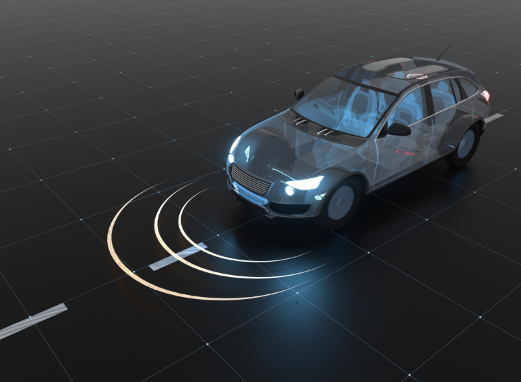Addressing the Challenges of Autonomous Vehicle Product Development
Image source: Canva
For the past few years, the automotive industry has invested heavily in autonomous vehicle product development. Even so, the rollout has been challenging and has not lived up to consumer expectations.
The problem is not one of intent. Manufacturers of autonomous vehicles want to ensure that their products behave as passengers expect by not making dangerous turns, obeying traffic rules, driving on safe surfaces, and keeping pedestrians safe. The key to performing these tasks safely is inextricably linked to the data that is used to train artificial intelligence models that power these autonomous solutions. The size, frequency, and complexity of this data, coming from different sensors such as radar, cameras, and lidar, contribute to a complicated landscape of hardware and software.
Defining Terms and Expectations
One great example within the automotive industry and the development of autonomous vehicles, starts with a simple question: ‘What is a road?’
The answer can vary significantly, depending on where you are in the world, the topography of the area you are in, and what kind of driving habits you lean towards. For these factors and much more, aligning and agreeing on what is a road is far easier said than done.
Once we’ve successfully navigated the complexities associated with defining terms and expectations, the next question is, “How can an AI product or autonomous vehicle make not only the correct decision but one that aligns with human expectations?” To solve this, we need our industry’s product engineers and data scientists to combine automated and human feedback into one cohesive dataset to train the machine learning at the heart of all AI applications.
Doing so is no easy task. There is an enormous amount of complex data associated with an autonomous vehicle, including multi-sensor inputs from cameras, LiDAR, and radar data in large-scale sequences. This illustrates not only the importance of alignment but also the challenge it poses when dealing with data.
Programming with Data Versus Programming with Code
Another significant challenge in the automotive segment is the speed of change within the push for Software Defined Vehicles (SDVs). While some OEMs have made good progress, the reality of the value chain is that much of the SDV is still being defined by Tier-1, Tier-2 suppliers, and beyond. In this regard, it is still a complex landscape, with multiple vendors, multiple kernels, and multiple integrations.
The SDV mindset is even more complex because of the critical changes that stem from programming with “code” to programming with “data” as demanded by machine learning and AI product development. Why? In ML-based product development, proprietary data is a huge asset. In a market where everyone has access to the same algorithms, product success depends largely on the value of the data. This will require better fusion of sensor data and adopting a more iterative framework of working with the data.
However, just as with code, more data doesn’t necessarily mean more progress. Unfortunately, the value of massive datasets begins to depreciate the moment it is stored in the cloud or data center. As long as the world keeps changing and evolving, all datasets of real-world recordings inevitably suffer from data drift.
Rather than guesstimating fixed data needs up-front, we believe in accurately quantifying them along the way; and enabling a cascade of smaller, more budget-effective decisions based on constant quantification of the performance impact. This can be achieved by integrating your data effort with your ongoing ML model development and continuously treating both your model and your datasets as objects under development.
3 Steps Toward Better Dataset Management
Automakers and the supplier tiers are moving in the right direction, but there is more at stake with new product development that utilises AI than just the SDV conversation. Are we prepared to collect, compile, and understand complex data efficiently and profitably? And what happens when autonomy reaches other forms of mobility, such as robotics and drones?
Here are a few recommendations for automotive product teams that want to improve their dataset management:
1. Iteration is the key
If you assemble a large dataset for your ADAS/AD efforts, you must expect it to evolve. The challenge now is to shape your data with this evolution in mind, which in turn informs your AI products.
2. Establish a solid structure for your data
As many have noted, data is the new oil, and without it, there’s very little you can do, in terms of providing AI products that work and are valuable to the customer. At this point, most businesses have already begun gathering and storing their data, but in many cases, that has led to hoarding and other messy habits. Mature AI product teams structure their data in a meaningful way for optimal quality.
3. Buy outcomes, not data
Many OEM and T1/T2 organisations still view “data” as something to procure, just as they would with another piece of hardware or even indirect services. ADAS/AD product teams need to engage partners for the right outcomes versus the lowest price/fastest time to deliver “bounding boxes.”
The future of automotive product development hinges on the ability to manage evolving AI datasets more effectively. To do so successfully will require a paradigm shift in development tools and processes. Now is the time to step up to this challenge as an industry and prepare, that we will be ready for the opportunities ahead.
Autonomous Vehicles Online
May 22nd 2024, Automotive IQ is hosting Autonomous Vehicles Online. See our current online events.
